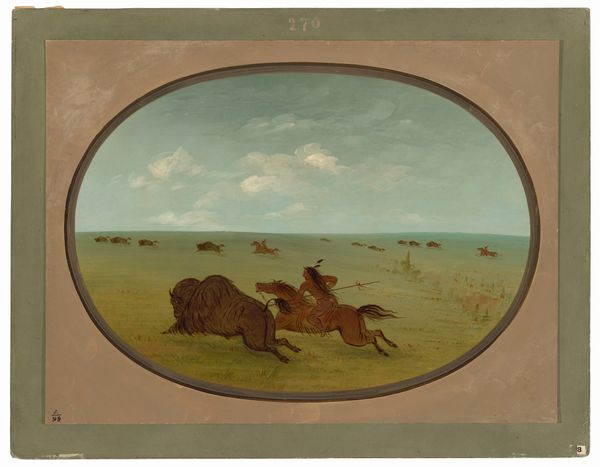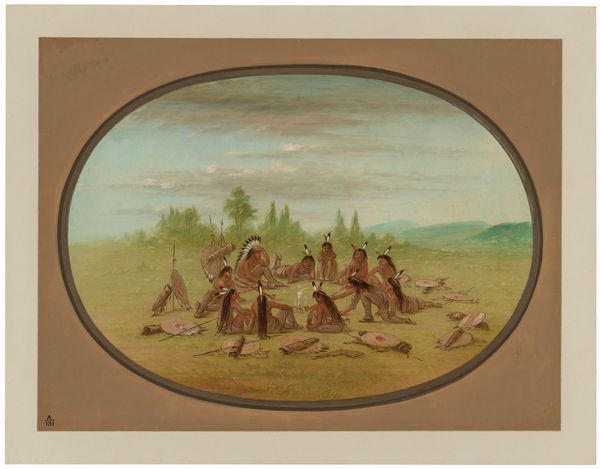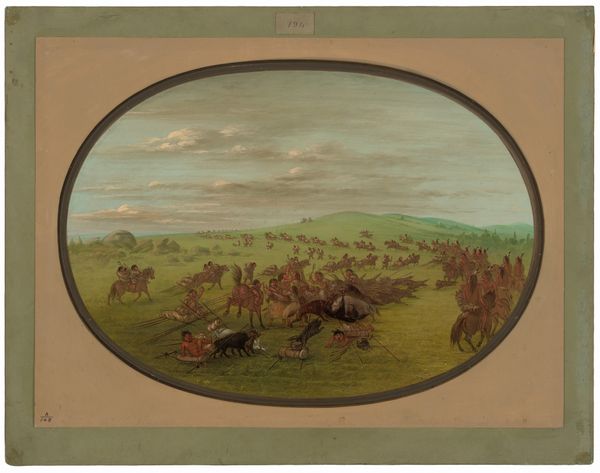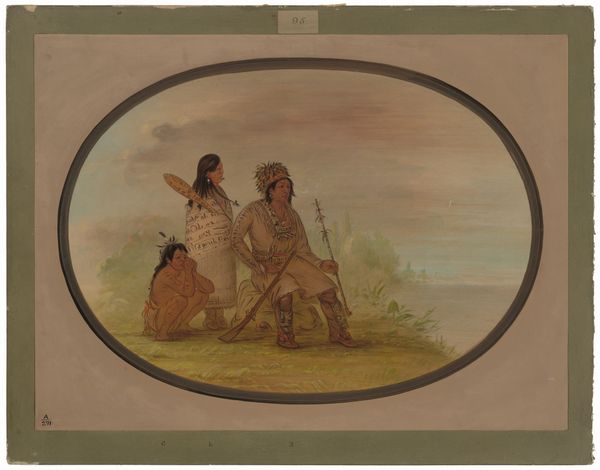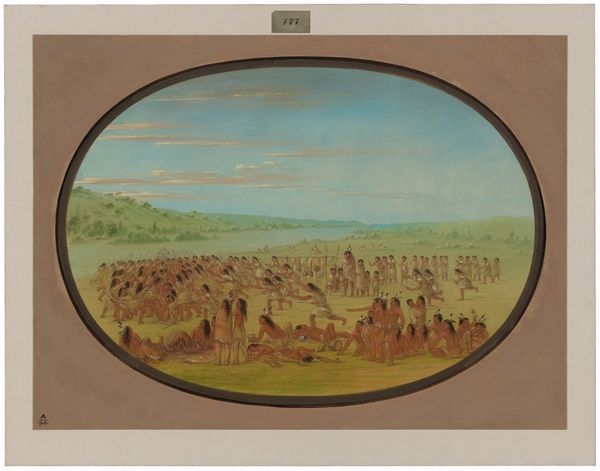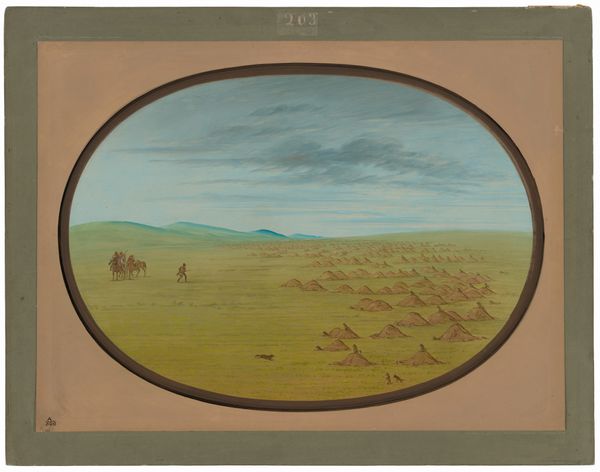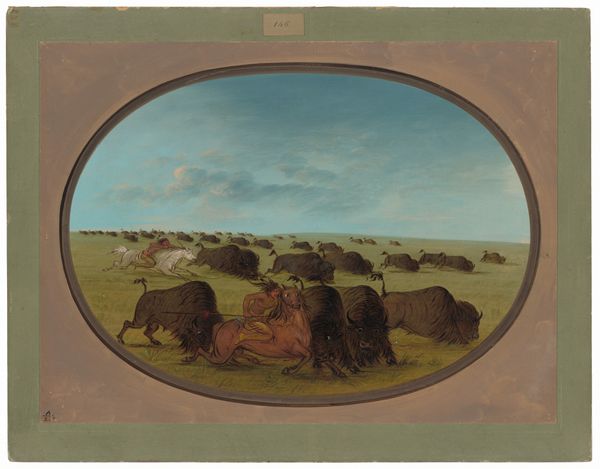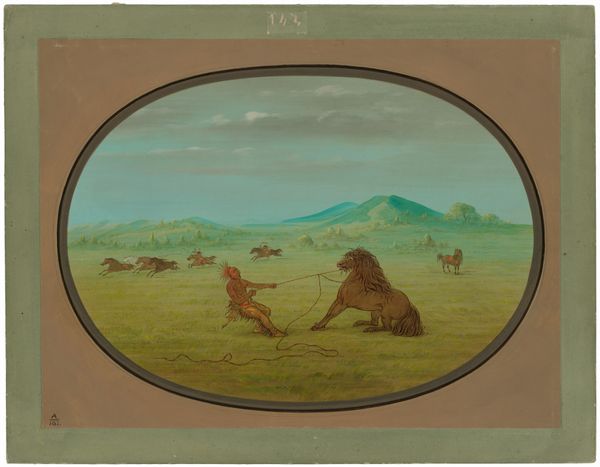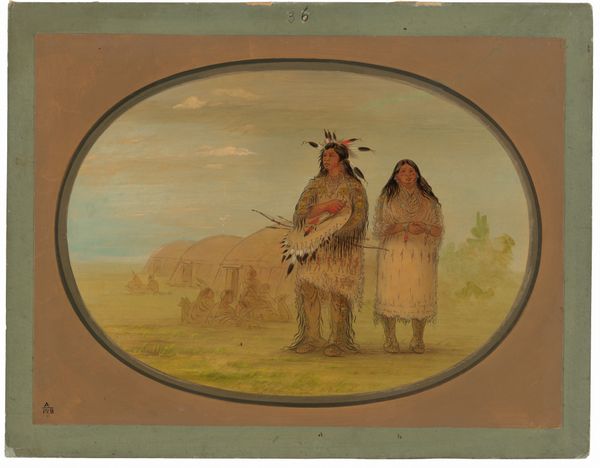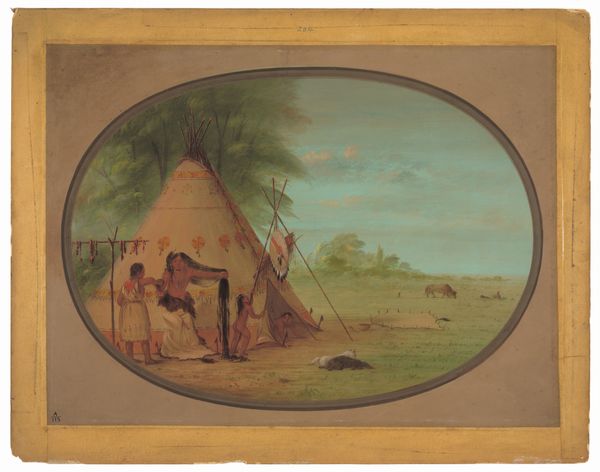
painting, gouache
#
water colours
#
narrative-art
#
painting
#
gouache
#
landscape
#
figuration
Dimensions: overall: 46.5 x 62.9 cm (18 5/16 x 24 3/4 in.)
Copyright: National Gallery of Art: CC0 1.0
Curator: Oh, look at this wide, ochre landscape. It feels strangely subdued, doesn't it? Almost… spectral. Editor: Here we have George Catlin's "Catlin and Indian Attacking Buffalo", created sometime between 1861 and 1869. Catlin was famously dedicated to documenting Indigenous peoples and their ways of life. Curator: There's such a sadness hanging over it. It feels like looking at a ghost story from the old West. Those long lines of buffalo receding into the distance, under that heavy sky… it's melancholy, but with a real beauty. The watercolour style makes it look almost transparent. Editor: Exactly. Catlin's work, especially later in his career, like this piece, became more romanticized. He often presented these hunting scenes, emphasizing a kind of noble savagery in contrast to what he saw as the encroachment of European-American civilization. Curator: You can see how the painting sort of stages that encounter: on the left, we've got the grounded bison almost blending into the terrain while on the right, the standing Indian confronts another figure who is assumed to be Catlin. They make eye contact and share a smoke. Editor: Right, and we have to consider Catlin's self-insertion. His depictions of Native Americans, while seemingly sympathetic, were also performative, reinforcing his role as the enlightened observer documenting a vanishing world. Curator: But isn't there something deeply personal in that documentation? I mean, imagine traveling as he did, seeing these cultures firsthand… that raw landscape... Wouldn't that transform your perspective? There is this desire to hold onto this vision, like a dream that is fading, Editor: True. He believed he was capturing something vital before it was lost forever due to U.S. expansion, however the very act of representing it freezes it in time and risks mythologizing Native American existence. We should examine our desires and interests as they emerge in our viewing experience. Curator: A poignant reminder that how we choose to record impacts our vision, so let our eyes remain free. Editor: Indeed. A complicated vision—historically invaluable yet steeped in its own subjective limitations. Thank you for tuning in.
Comments
No comments
Be the first to comment and join the conversation on the ultimate creative platform.

